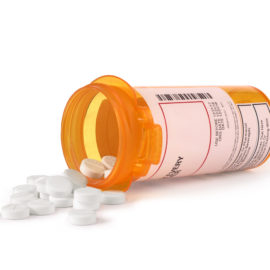Chris Farley, a brilliant comic, portrayed a range of characters on Saturday Night Live in the 1990s and left an indelible mark with many memorable performances – Chris Farley movies include Tommy Boy and Wayne’s World 2.
However, his life took a tragic turn when he succumbed to a drug overdose at the age of just 33. In December 1997, Chris Farley’s demise was attributed to a lethal combination of cocaine and morphine known as a speedball. His friends, though, believe that there is a deeper and more complex narrative behind his tragic end.
Farley’s story is a reminder that even someone who brought joy to the world through laughter could grapple with profound personal challenges. Addiction is a progressive condition that does nor discriminate, and while it gets worse if untreated, substance use disorder responds well to evidence-based interventions.
Chris Farley SNL
Farley developed an ability for making people laugh early in life. Struggling with weight management challenges as a child, Farley discovered that preemptive humor was an effective defense against potential bullies.
After completing his education at Marquette University, Farley headed to the Second City Improv Theater in Chicago. His on-stage antics soon captured the attention of Lorne Michaels, the head of SNL. Michaels swiftly brought the emerging star onboard, alongside fellow SNL talents like Chris Rock, Adam Sandler, and David Spade.
Joining the show in 1990, Farley almost immediately felt the weight of newfound fame. Succumbing to the pressure, he turned to drugs and alcohol, earning a reputation for his eccentric behavior as he began self-medicating. Despite his apparent lack of control, those close to him would later describe Farley as “a very sweet guy before midnight.“

Chris Farley Addiction
After completing four seasons on Saturday Night Live, Farley left to embark on a Hollywood career, swiftly earning acclaim with acclaimed films like Tommy Boy, and becoming an even more bankable star.
Despite his success, Farley, struggled to deal with critical reaction to his work. While seeking acceptance within the Hollywood elite, he also yearned for a more profound connection. In a candid interview with Rolling Stone, Farley expressed his longing for love:
“This notion of love is something that would be a wonderful thing. I don’t think I’ve ever experienced it, other than the love of my family. At this point, it’s something beyond my grasp. But I can imagine it, and longing for it makes me sad.”
Chris Farley battled persistent and simultaneous struggles with excessive alcohol consumption, drug abuse, and overeating. His attempts to address these issues led him in and out of Alcoholics Anonymous meetings, rehab facilities, and weight-loss centers as he battled to find peace and recalibrate his life.
In the late 1990s, Farley’s behavior grew increasingly alarming, with reports of heavy consumption of both heroin and cocaine. Concerned friends like Adam Sandler warned him of the potential consequences, with Sandler stressing – “You’re gonna die from that, buddy, you’ve got to stop. It’s not going to end right.”
Others, like Chevy Chase, employed tough love tactics. Leveraging Farley’s admiration for SNL’s original problem child John Belushi, Chase told him, “Look, you’re not John Belushi. And when you overdose or kill yourself, you will not have the same acclaim that John did. You don’t have the record of accomplishment that he had.”
In a return to SNL just two months before his death in 1997, Farley hosted the show he once dominated. His diminished stamina was apparent to the audience and cast alike, making it clear that something was amiss.
The Tragic Conclusion: Chris Farley Overdose
In July 1997, during the opening of a Planet Hollywood in Indianapolis, Chris Farley – visibly perspiring and significantly overweight – appeared disoriented as he entertained the crowd. Engaging in a peculiar display, he soaked himself with a bottle of milk. Not everyone found the spectacle amusing, though. When a friend pulled Farley aside and advised him to slow down, Farley responded with one of his mischievous grins and a clichéd statement, “I want to live fast and die young.“
On December 18, this wish was tragically granted. A four-day binge involving alcohol and an assortment of drugs led to the comedic talent being discovered lifeless at the age of 33 in his Chicago apartment.
Reports suggest that Farley’s binge started at the club Karma, where he partied until around 2am. The revelry then continued at his apartment. The subsequent evening, he attended the 38th-anniversary celebration for Second City before being seen at in various bars.
The following day, Farley skipped a scheduled haircut and allegedly spent time with a high-class escort. The woman later disclosed that Farley seemed more interested in obtaining cocaine than anything else – “I don’t think he knew what he wanted… He just kept bouncing from room to room.”
When John Farley discovered his brother, it was too late. Authorities found no signs of foul play, and no traces of drugs in the apartment. Weeks passed before a toxicology report revealed the cause of Chris Farley’s death. While speculation initially ranged from drug and alcohol abuse to heart failure or even choking, the January 1998 report confirmed a fatal overdose of morphine and cocaine, commonly known as a speedball, the drug combination that claimed the life of Farley’s hero, John Belushi, at the same age in 1982. Traces of an antidepressant and antihistamine were found but were not linked to his death. Marijuana was present, but alcohol was not detected.
What Can We Learn from the Chris Farley Addiction Story?
Chris Farley’s life and struggles with addiction offer key lessons that can benefit both those in the spotlight and the broader public:
- The impact of fame and pressure: Chris Farley’s rapid rise to fame on Saturday Night Live brought with it immense pressure and scrutiny. The expectations from critics, coupled with his desire for professional acceptance, took a toll on his emotional well-being. Farley’s story illustrates the need for robust mental health support in the entertainment industry.
- Longing for connection and acceptance: Farley’s candid expression of longing for love shows the human need for connection and meaningful relationships. Despite achieving success, he struggled with a sense of isolation and sought solace in destructive behaviors. Addressing emotional well-being and promoting supportive environments in both personal and professional spheres is key for overall well-being.
- The progressive nature of addiction: Farley’s descent into addiction started with substances like alcohol and eventually escalated to more dangerous drugs. His story serves as a stark reminder of the progressive nature of addiction and the benefits of early intervention. Recognizing the signs and providing support at the onset of substance abuse can help prevent the escalation of addiction.
- Impact of tough love and warning signs: Friends like Adam Sandler and Chevy Chase attempted to intervene and warn Farley about the consequences of his lifestyle. Addiction’s grip is formidable, though, and the impact of tough love varies from person to person. Farley’s story prompts reflection on the role of friends and family in identifying warning signs and actively engaging in supportive conversations to encourage seeking help.
- Health consequences of addiction: The tragic and premature end of Chris Farley’s life highlights the severe health consequences of addiction. His death at the age of 33, eerily mirroring the fate of his idol John Belushi, can serve as a powerful deterrent and motivation for individuals struggling with addiction to seek help.
- The importance of comprehensive treatment: Farley’s journey through weight-loss centers, rehab facilities, and AA meetings shows that addiction is a complex condition that often requires multifaceted interventions, including therapy, medical support, and ongoing community involvement.
FAQs
How old was Chris Farley when he died?
Chris Farley died at the age of 33.
What happened to Chris Farley?
Chris Farley died of a drug overdose.
What killed Chris Farley?
Chris Farley died after consuming a lethal dose of cocaine and morphine, informally known as a speedball.

Get Help for Drug & Alcohol Addiction at Gratitude Lodge
Although drug and alcohol addictions are chronic and progressive conditions, substance use disorders respond favorably to evidence-based treatment. We can help you unpack any type of addiction at Gratitude Lodge in Southern California.
Most people begin their recovery with supervised detoxification. Our medical detox programs allow you to access medications and continuous care to reduce the intensity of the withdrawal process. You will then be ready to move into an ongoing inpatient program at our Long Beach or Newport Beach rehabs.
All Gratitude Lodge programs use the following treatments:
- MAT (medication-assisted treatment)
- Psychotherapies
- Holistic therapies
- Family therapy
- Group therapy
- Individual therapy
- Aftercare
There is no need to cope with addiction alone. Call 800-994-2184 for on-the-spot assistance.




























